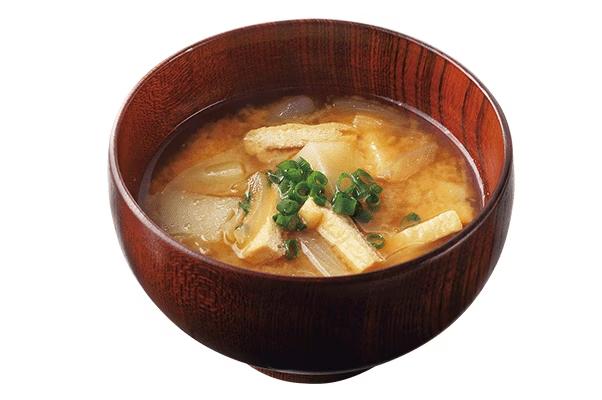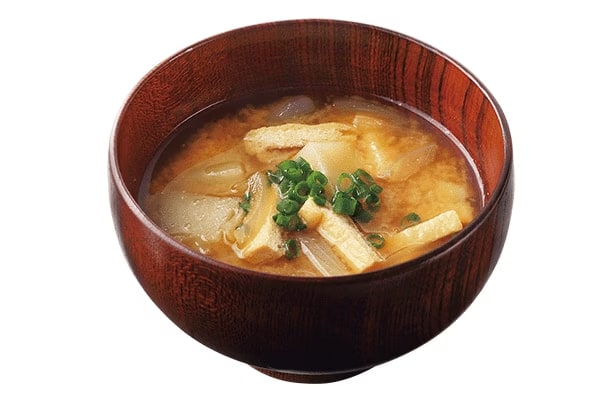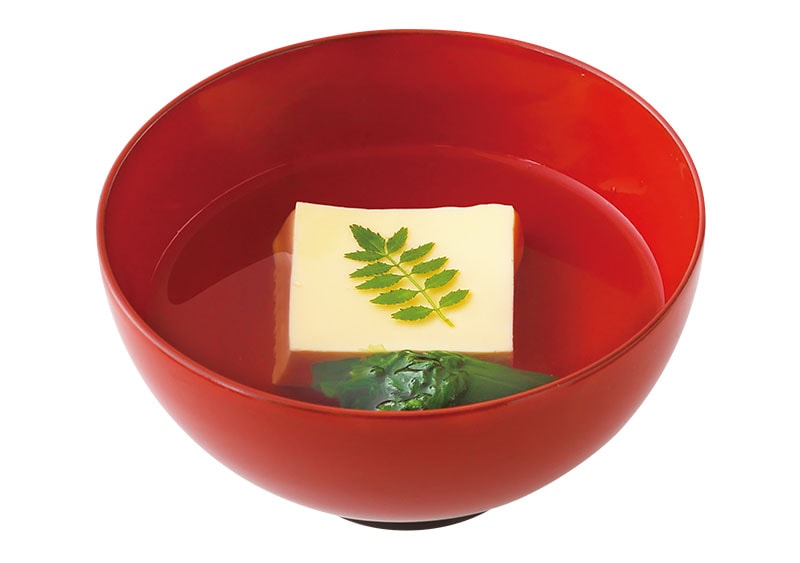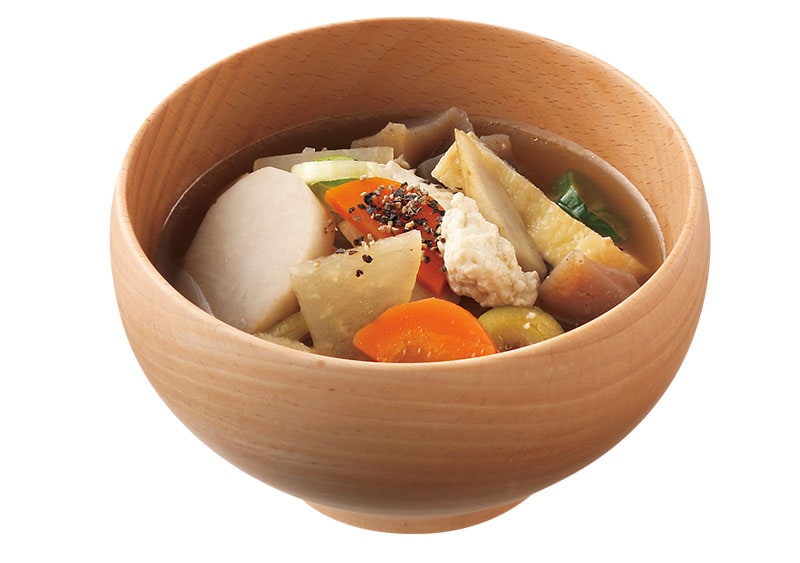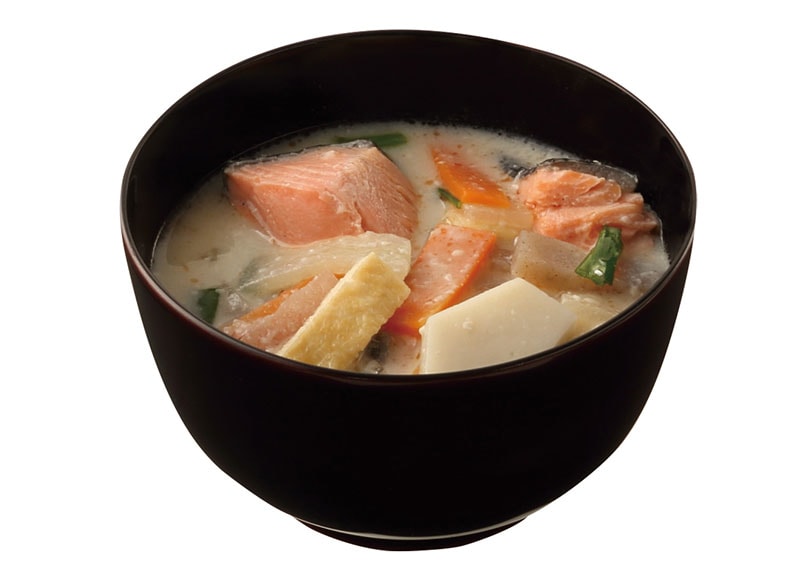This year, Fundamentals 101 focuses on Japanese soups. We start with miso soup, a quintessential dish served with rice to make the Japanese meal complete.
Miso has been used for soup in Japan for centuries. Miso is a fermented paste of soybeans, salt and koji fermentation starter. Three kinds of koji—rice (kome), barley (mugi) and soybean (mame)—are used to make miso, and the koji used determines the type of miso, as shown below. Miso types may be used individually or mixed, depending on personal preference. Miso is also categorized by color, which turns darker with aging. Most popular is red (aka) miso; then there is yellow (tankoshoku) miso, and white (shiro) miso. Miso is produced throughout Japan, and can reflect regional characteristics, such as climate and culture, through its varying flavors and colors.
Kome miso (with rice koji)
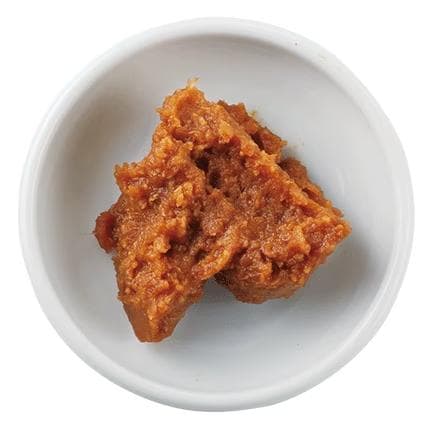

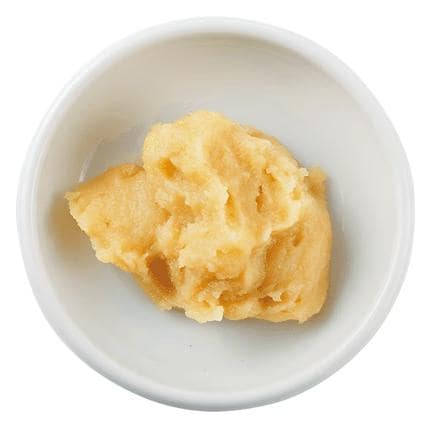
Mugi miso (with barley koji)
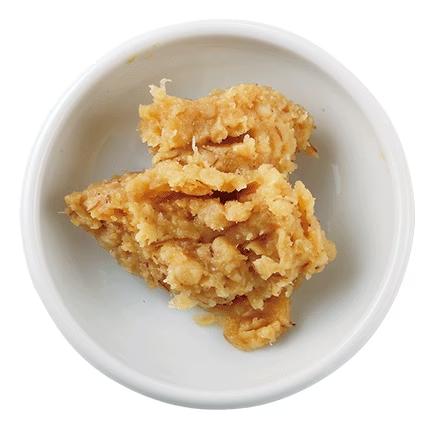
Mame miso (with soybean koji)
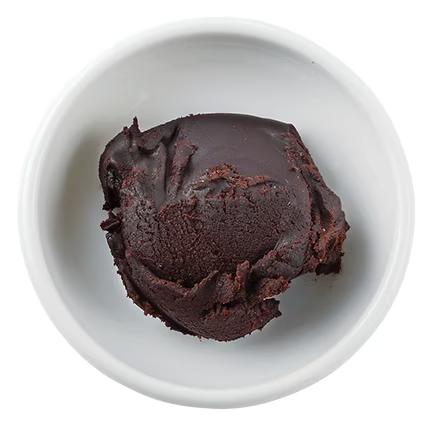
Miso soup is easy to make. It may include one or several ingredients, such as daikon, mushrooms, tofu, wakame seaweed or shellfish. Here is one example:
- 1Prepare dashi stock. Peel and cut a potato into small pieces. Thinly slice onion. To remove smell and excess oil from abura-age deep-fried tofu, place in a colander and pour boiling water over it. Once cooled, gently squeeze out excess water and cut into strips.
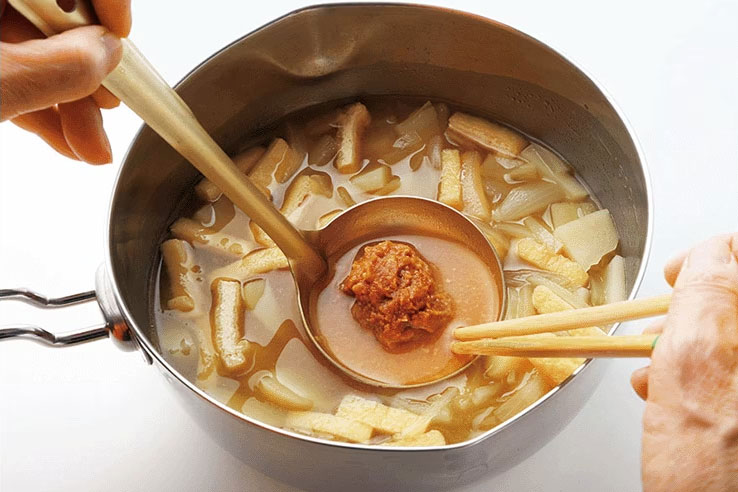
- 2Heat the stock, potato and onion over medium heat. When the potato is cooked, add abura-age. Bring to a boil then reduce heat to low.
- 3Dissolve miso in the soup using a ladle and chopsticks (see photo), remove pot from heat. To preserve miso flavor, do not allow to boil again. Garnish with chopped green onion to serve.
